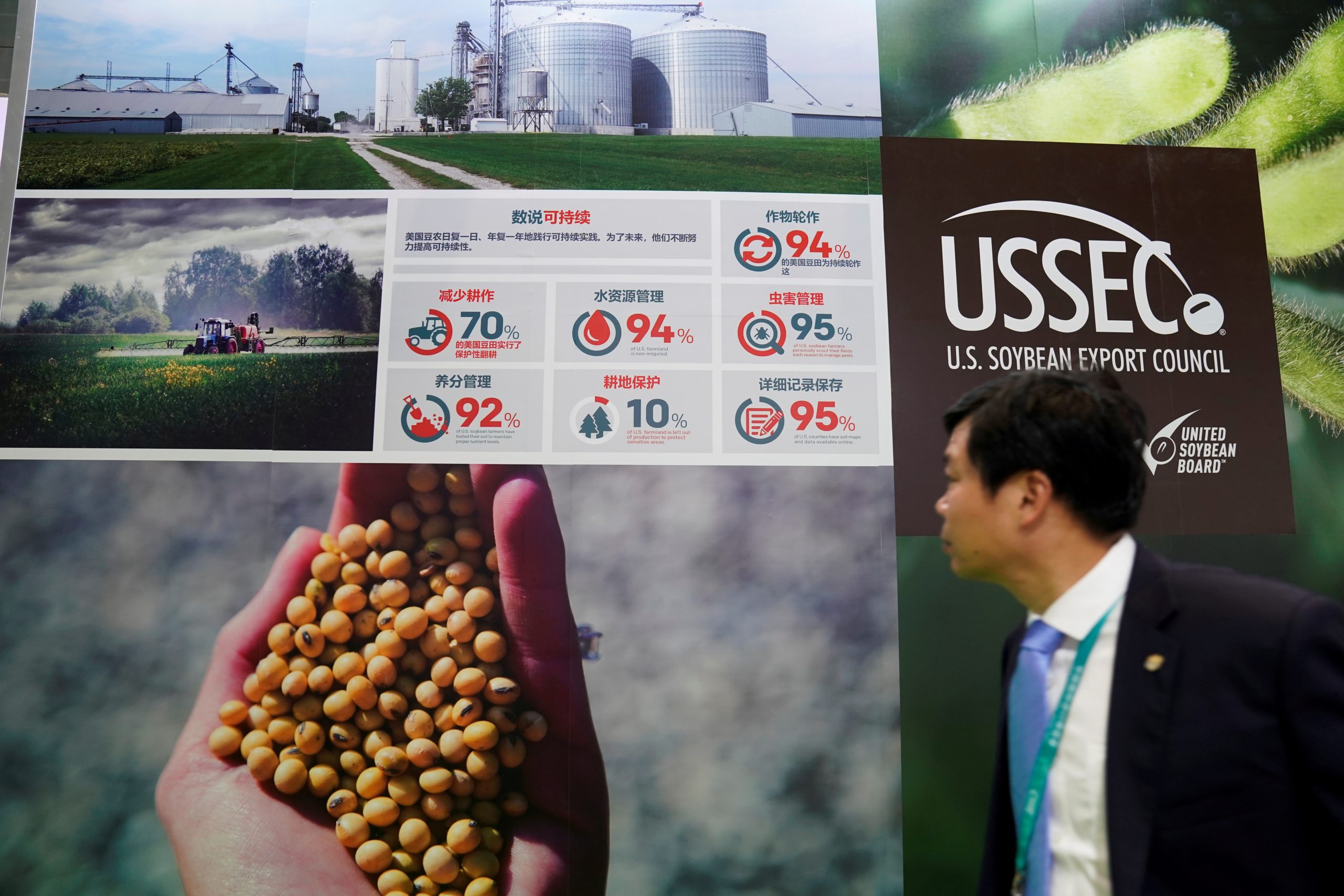
Madeline Sponsler, FISM News
[elfsight_social_share_buttons id=”1″]
Chinese imports goal of $36.5 billion for U.S. farm goods this year may not be quite out of reach, but it’s looking like a big stretch.
By the end of May, imports were running behind 2017 levels (rather than 50% ahead as needed). While orders for China’s main farm import, soybeans, have started to pick up, soaring levels of buying would be needed to hit the mark.
“It just doesn’t seem likely to me,” said John Payne, senior futures & options broker with Daniels Trading in Chicago. “If the global economy was more normal then maybe, but you have this whole COVID problem.”
Beijing and Washington sealed their Phase 1 trade deal in January after two years of acrimony and a steep slump in imports by one of the biggest buyers of U.S. agricultural goods.
Analysts at the time expressed reservations about the farm goods target, which is a quarter above 2013’s all-time high of $29 billion.
Still, Chinese buyers stepped up purchases this year of a range of farm imports, sealing record deals in corn and meat imports, prompting some optimism.
“If I were to grade them today, we went from a C- to a B, and if it continues maybe we can start to see higher levels. But it needs to be a continual, ongoing affair,” said Dan Basse, president of AgResource Co in Chicago.
The chances of meeting the target will be clear in the next few months. Soybeans typically account for about half of China’s U.S. farm imports and the vast bulk of buying comes in the last three months of the year when supplies from top grower Brazil dry up.
After a slow start, Chinese importers booked more than $2.5 billion in U.S. soy purchases in just the past eight weeks.
It’s unclear, however, whether China will sustain its appetite over the next five months after its crushers earlier snapped up record volumes from Brazil.
Demand will also depend on China’s recovery from a disease that killed hundreds of millions of pigs, reducing the need for feed.
For soybeans to make up half of the $36.5 billion target, buyers would have to take some $2.8 billion a month from July to December, according to Reuters calculations.
This pace of monthly buying has never been sustained for more than two straight months and only then during the fourth quarter of the year, most recently in 2016.
Falling commodity prices due to the coronavirus pandemic present an added difficulty, with the deal tied squarely to the value of imports. Soybean prices this year have averaged around 10% less than in 2016. The sales have disappointed U.S. farmers hoping for a Chinese buying bonanza.
But the final volumes of China’s soybean purchases will likely depend on whether or not Beijing chooses to replenish government stockpiles.
Sourced from Reuters
